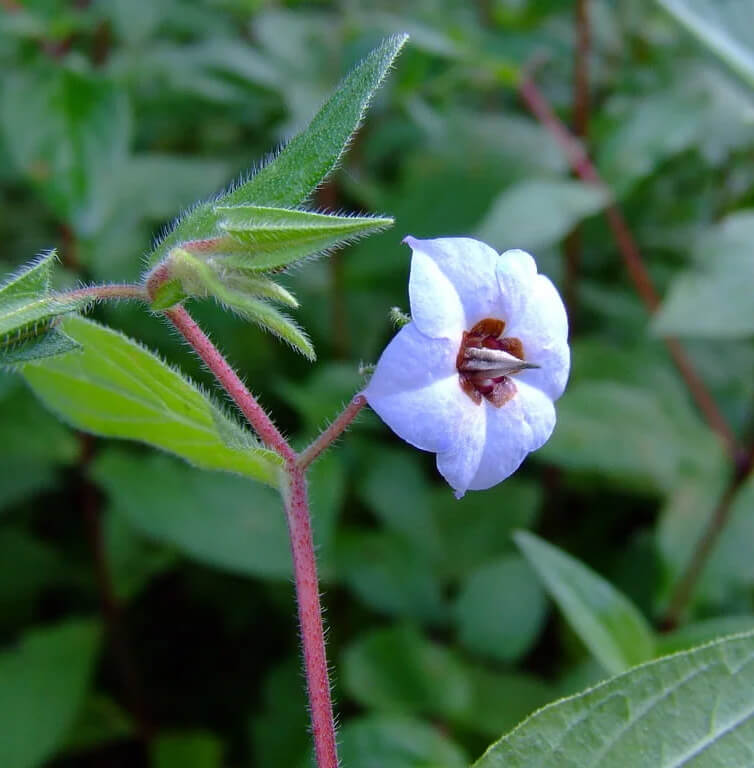- +033 2572 7171
- info@dhanvantary.com

4.5 Rating | 4500 Review

4.5 Rating | 4500 Review
Adhapushpi plant is important for its medicinal properties, it plays the main role as a special ingredient in several medicines. This plant is widely used in ayurvedic and homoeopathic medicines, this herb effectively provides benefits such as diuretic, anti-arthritic, anorexia, dysentery, and skin diseases. This shows its effects on snake-poisoning also. Its flowers are usually oppositely hung on the pant. Acharya Charaka has mentioned Avakpushpi in Vatarakta Chikitsa as a Jeevaniya Ghrita. Chakrapanidatta mentions it under Shiro Virechana Dravya kalpa samgraha.

This is an Indian Medicinal plant found grossly in the Indian subcontinent and distributed as a weed throughout India. The seeds of this plant are filled with linoleic acid, and oleic acid and the leaves are enriched with hexaconase and ethyl ester. This plant flowers from September to November and January to march. It has various benefits that are reportedly seen by many researchers if crushed roots are mixed with water, or prepared for its decoction and then given to children it can help in managing dysentery, its flowers are reportedly used as a sudorific and pectoral, leaves and flowers of this plant are edible and is added in the various medicines to enhance their working capacity.
Botanical Name:
Trichodesma Indicum
Family:
Boraginaceae
Genus
Trichodesma
Species
Indicum
In Hindi – Hetmundiya, ondhaphuli, chota kulpha
In English – Indian Borage
In Kannada – Athomukhi, Kattetumbesoppu
In Punjabi – Andusi, Ratmandi
In Telugu – Guvvagatti
This is an annual herb that is erect, branched, and of a height of fifty centimeters, with hairy texture all over the plant.
Leaves – stalk less, opposite two to eight centimeters long, heart-shaped from the base and pointed to the tip, and are lance shaped.
Flowers – appear as a single on the axils form.
The tube of flowers is of pale blue in color, or of white color, with the limb of about 1.5 cm in diameter, and the petals are pointed to the outside. The tube of sepals is hairy green, long up to 1 to 1.3 cm.
Fruits – are ellipsoid and are covered by sepals.
Nutlets – Are rough on the inner side and is five millimeter long.
This plant is found all over India like on roadsides, and stony dry wastelands. This is found on Western Ghats and some parts of the Himalayas in a wide range at the elevation of 1500 meters from sea level.
This plant is acrid and bitter in taste, it helps in inflammatory conditions, and is having various properties like carminative, constipating, diuretic, depurative, and ophthalmic in nature. This also shows great results in arthritic patients, dyspepsia, diarrhea, dysentery, skin inflammation, and in menstrual problems.
Rasa (Taste) – Katu (Pungent), Tikta (Bitter)
Guna (Quality) – Laghu (Light)
Veerya (Potency) – ushna (hot)
Vipaka (Post digestive effect) – Katu (Pungent)
Karma (Action) – Balances the Vata and Kapha dosha
Projyang (Part used) – The whole plant is used with its roots and leaves, flowers, seeds, fruit, and stem
This is Kapha vata shaman in nature, also effective in inflammation and for analgesic properties.
This also helps to enhance the digestive fire
It is carminative in nature.
Due to its anti-inflammatory properties, it helps to purify the blood and is used as a diuretic.
This helps to contract the uterus effectively so helps in dysmenorrhea and in the case of any abortion, it also gives effective results.
This herb can be used in the form of paste in inflammatory diseases like rheumatoid arthritis so can combat the pain and swelling from the affected area.
Irritable bowel syndrome is also treated with a dose of 15 to 20 ml and is also helpful in treating diarrhea patients.
In burning sensation in the abdominal region or any burning symptom of Urinary tract infection can be cured with the help of the cold infusion of Trichodesma Indicum.
The decoction of this wonderful plant can treat dysmenorrhea and in any case of abortion.
In any skin infected conditions, its paste is used for further application on the affected site.
Paste of roots can be taken up to 5 to 10 grams.
Plant Juice can be taken up to ten to twenty ml of juice.
Aak Root
Aak Flowers
